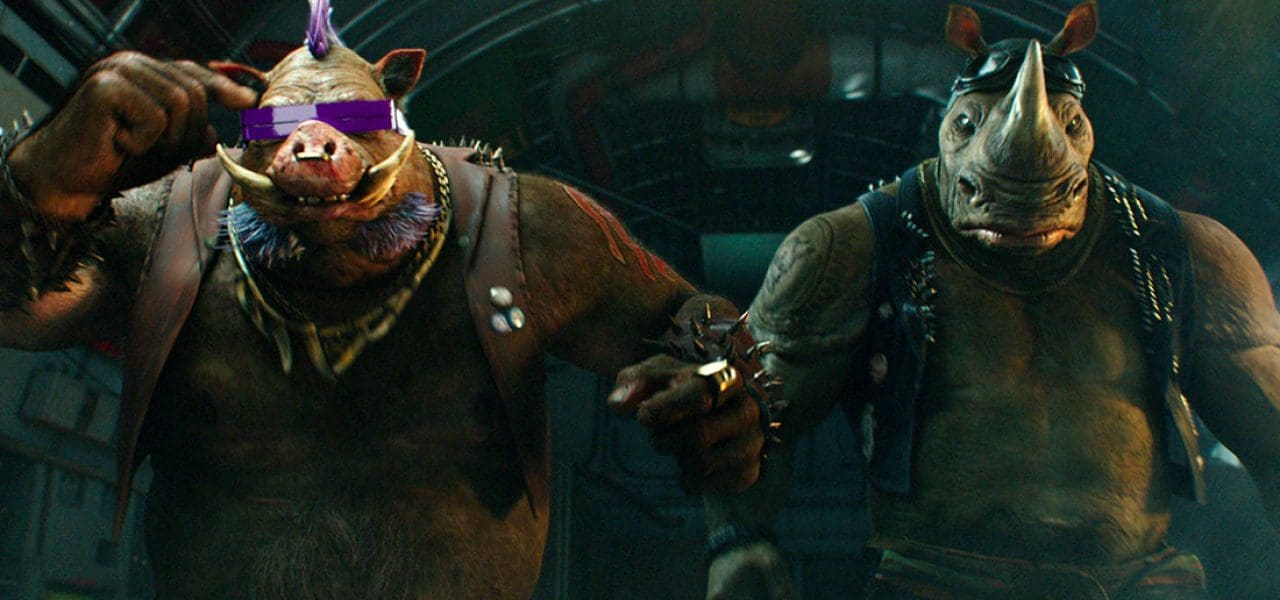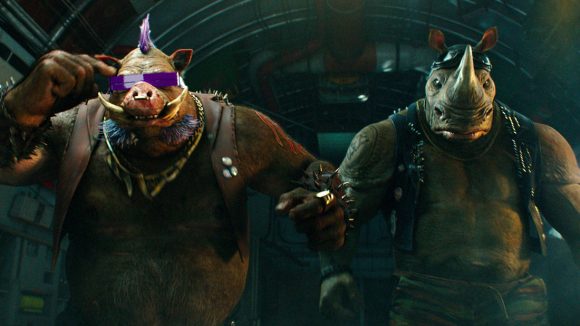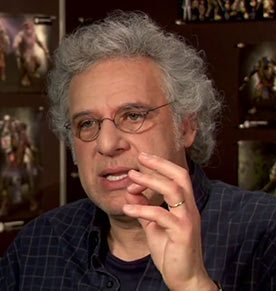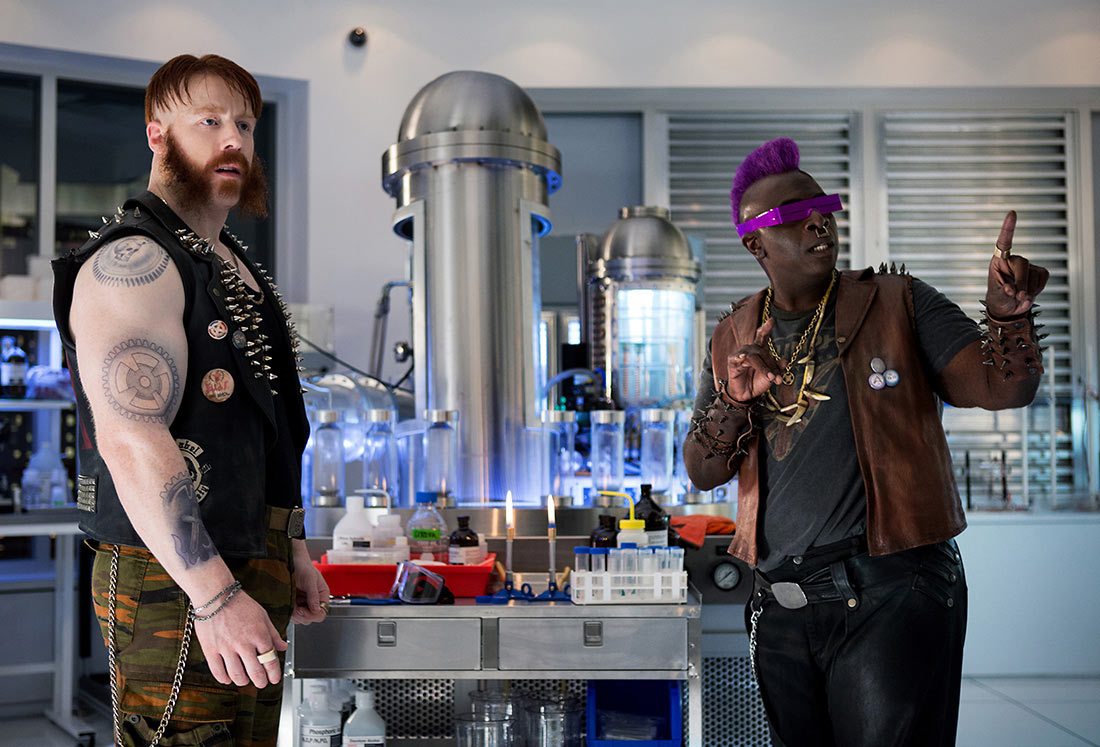

The Tech Behind Bebop and Rocksteady’s Comic Turns in ‘Teenage Mutant Nina Turtles: Out of the Shadows’
For 2014’s Teenage Mutant Ninja Turtles, visual effects studio Industrial Light & Magic made some major leaps in on-set body and facial motion capture to create the film’s hero characters. Another leap in performance capture took place to up the ante for the just-released sequel, Teenage Mutant Nina Turtles: Out of the Shadows.
But two of the brashest—and possibly funniest—characters in the Turtles franchise, Bebop and Rocksteady, were brought to life with more of a combination of vfx techniques: on-set motion capture and video reference, additional mocap at ILM, and keyframe animation. Cartoon Brew finds out more from Out of the Shadows visual effects supervisor Pablo Helman.
Bebop and Rocksteady are long-time fan favorites from the Turtles comics and animated series. In Out of the Shadows, their henchmen origins are explained as mutations from humans into a warthog (Bebop, played by comedian Gary Anthony Williams) and a rhinoceros (Rocksteady, played by WWE wrestler Stephen ‘Sheamus’ Farrelly).
The intention, then, was always to feature the characters as comic relief despite their foreboding appearance and brutal actions. For example, after mutating, the creatures are incredibly excited about their new look and even check out what’s changed inside their pants. At one point, Bebop and Rocksteady also ride a tank down a raging Brazilian jungle river while facing off against the turtles—just one of the many outrageous sequences in which the warthog and rhino are involved.

Since Bebop and Rocksteady’s original incarnations were in cartoon form, ILM had to re-interpret them for a photorealistic world and make sure the characters remained appealing. “They needed to be goofy but also lovable,” said Helman. While the actors playing the turtles wore full facial motion capture gear as part of ILM’s Muse system, a system that included further advancements such as pupil tracking, this process was not followed for Bebop and Rocksteady, partly because the facial features of the warthog and rhino were so different from the actors.
However, Williams and Farrelly still performed Bebop and Rocksteady in animal form as stand-ins or as reference during filming. ILM’s animators, overseen by animation supervisor Kevin Martel and associate animation supervisor Shawn Kelly, then infused the actor’s performances into the cg characters, along with additional keyframing. “Gary and Sheamus were so good together and they had such a great time on set; you can’t possibly ignore that,” said Helman, commenting on how the actors’ performances remained part of ILM’s interpretation of the characters.

The animators would, at times, use ILM’s own motion capture stage to perform certain parts of the Bebop and Rocksteady scenes themselves. They’d then take the resulting data into their animation. Both characters required hair and cloth simulation, too, with Bebop sporting a mohawk and each wearing an array of biker fatigues and equipment.
Another form of animation data was also available in the form of stunt motion capture for scenes involving Bebop and Rocksteady during choreographed fights. This was acquired using stunt performers wearing ILM’s patented iMocap suits, effectively gray tracking suits with specialized markers. “We also had these ‘stunties’ wear a helmet with a wire holding a ping pong ball where their head needed to be at the right height,” said Helman, who also noted this aided in camera framing and in interaction with the other actors.
Below is on-set B-roll footage that shows a stunt performer standing in for Bebop while wearing a special grey-markered tracking suit designed to aid in replacing him with a CG character in post-production.
The final result was a mix of techniques that was still informed by the original comedic actors, but that differed in assignment from the equally complicated work ILM delivered for the other characters in the film. “It’s actually a different kind of animation nuance, almost a different project,” Helman concluded. “It wasn’t such a science project as we had to do for the facial and body capture for the turtles.”

.png)